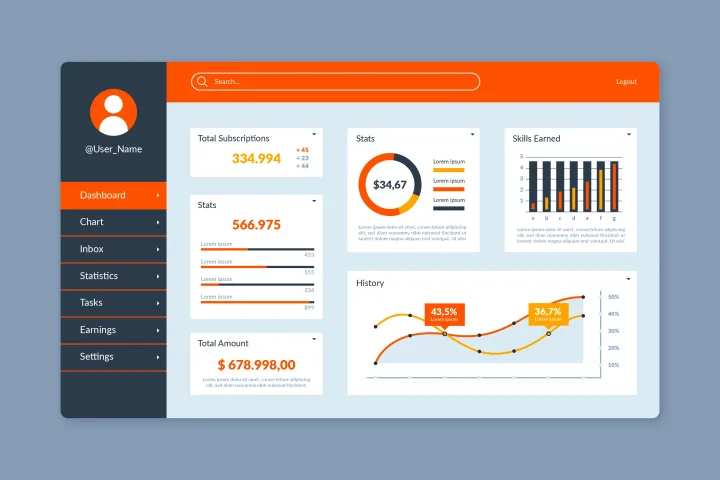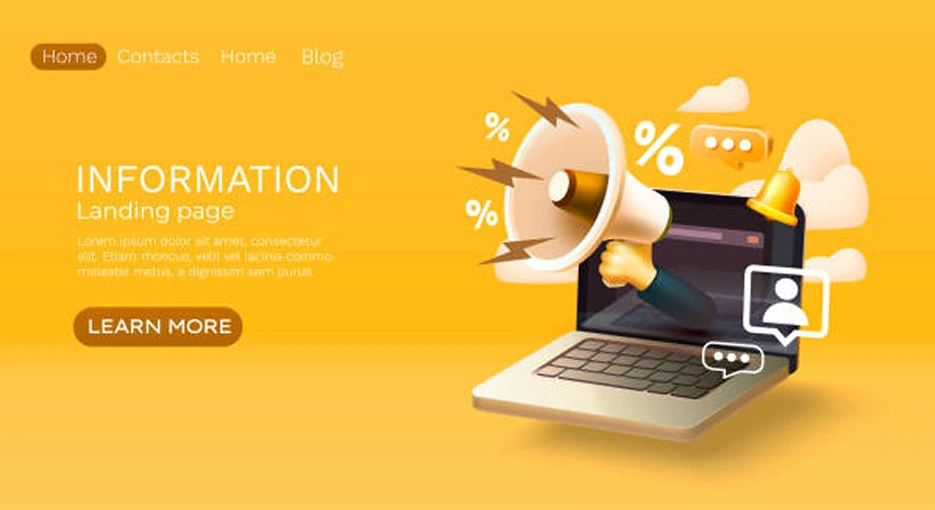
Introduction
In today’s fast-paced digital world, it’s typical for businesses to be concerned that they have too much data to handle. For example, teams often find spreadsheets disorganized, emails brimming with valuable information, and reports that don’t always align. The lack of communication is distressing because it is making their work take longer. Decision-makers waste hours trying to piece together mismatched information, missing out on opportunities while their competitors employ better methods. What is the answer? The solution lies in custom dashboards. These tools convert raw data into useful information that boosts sales and productivity.
Discover how custom dashboards transform chaos into actionable insights for Stremeline Digital Marketing clients, driving sustainable growth. We’ll explain why this method works, show you how it has worked in the past, and guide you through creating your own dashboard. First, we’ll talk about what makes things messy, and then we’ll help you establish a plan for your dashboard.
Why Chaos Creeps In (and How It Taxes Growth)
The company’s data is dispersed due to its infrastructure’s inability to keep pace with its rapid growth. Campaigns are constructed for clients, which leads to the creation of data silos. Sales teams use one CRM to keep track of leads, finance teams use another to keep track of invoices, and marketing teams use a third to see how many people click on their ads. If these different efforts aren’t combined, they can duplicate work, delay decisions, and fail to reach their goals.
Forbes (2021) says that poor data management costs firms an average of $15 million a year in lost profits since it makes things less efficient. This amount might be smaller for small and medium-sized enterprises, but it would still be very detrimental for them.
The tax on growth is rather high. Deloitte’s research suggests that executives spend as much as 30% of their time reconciling data instead of making strategies. We could utilize this time to devise innovative strategies for attracting or retaining clients. People lose faith in the system when things don’t add up, which slows down development. Custom dashboards are the greatest option because they combine information from several places into one solid source.
What a “Custom Dashboard” Really Means (Sources, Models, and Roles)
A bespoke dashboard is more than just a pretty chart; it’s a useful tool that helps a firm reach its goals. Information is gathered from several sources, including HubSpot for sales, QuickBooks for finances, and Google Analytics for marketing. These streams are transformed into clear images, such as bar graphs that show sales patterns, heatmaps that show problems with customer support, or line charts that show how much money marketing produces.

The “custom” element means making sure these models can perform what they’re supposed to do. For example, salespeople receive guidance on their next steps, while managers monitor KPI boundaries.
To create a custom dashboard like this, you must select data sources, models (such as predictive analytics for LTV: CAC), and access roles. This tailored approach ensures the tool meets specific business needs effectively.
Building such a dashboard involves leveraging modern technology for seamless integration.
- APIs are utilized to connect various technologies, ensuring that upgrades happen straight away.
- The results are custom dashboards that adapt to the business and let you perform 80% less reporting by hand (Gartner, 2024).
- This openness lets teams work rapidly, turning data into a growth opportunity instead of a problem.
5 Workflow Wins (Real Scenarios)
Sales → Ideas for What to Do Next
Sales teams often have trouble deciding which leads to follow up with initially. Custom dashboards may display your lead scores, purchase history, and engagement, and let you know what to do next in real time. For example, a rep would see, “Call John Doe—high intent, 90% chance of closing.” Using data to drive sales is more effective than guessing, as clients have reported a 15% increase in conversion rates in Q3 2025, backed by industry standards that show strong lead scoring systems can lead to up to 28%. This demonstrates that using data to generate sales is more effective than making assumptions.
Finance Dashboard: Invoice Matching and Alerts
Finance departments struggle to handle late payments and unpaid debts. A dashboard with automated matching algorithms looks for inconsistencies, such as an invoice for $500 and a record for $450, and sends out alerts. A financial team helped a client reduce reconciliation time by 40%, freeing up resources for strategic planning. By leveraging custom dashboards, teams can streamline processes, enhance accuracy, and focus on future financial planning in competitive markets.
Marketing → LTV: CAC by Channel (Not Clicks)

Marketers worry a lot about how many people click on their advertising, yet clicks don’t pay the bills. Profit does. A dashboard that provides the Lifetime Value to Customer Acquisition Cost (LTV: CAC) by channel, including Google Ads and LinkedIn, illustrates the real return on investment (ROI). A client optimized their budget by reallocating 30% of ad spend to high-value channels, boosting profits by 12% in two months. Custom dashboards empower marketers to focus on profitable channels, enhancing long-term value and ROI in competitive markets.
CS → SLA Risk Heatmap
Before things grow worse, customer service workers need to be able to spot SLA (Service Level Agreement) infractions. A heatmap dashboard displays which accounts are in danger based on how many issues they have or how long it takes to answer. This lowered SLA breaches by 25% for a client, which made consumers happy.
Exec View → KPI Guardrails and Trend Deltas
Leaders need to know how things are going at a high level. A dashboard with key performance indicators (KPIs) and trend deltas (such as “+5% vs. last quarter”) makes this evident. The leaders at Stremeline changed their plans based on this information, which led to a 10% boost in growth in October 2025.
30/60/90 Plan to ROI (People, Process, Platform)
To achieve a strong return on investment from custom dashboards, it is important to proceed methodically for minimal disruption and maximum value. Here is the 30/60/90-day plan:
- Days 1–30 (People): Recruit people from different departments to work together, such as IT to set up the technology, and management to figure out what is needed. Make sure that everyone knows how to use the custom dashboards by teaching them the basics.
- Days 31–60 (Process): Make it easy for data to move around, generate maps of KPIs, and test out prototypes. Enhance the efficiency of clients’ processes to reduce the time required to create a report from ten hours to just two.
- Days 61–90 (Platform): Launch the custom dashboards, record how many people use them, and modify the models as needed. By day 90, a client experienced a 20% increase in productivity, and we predicted a threefold increase in return on investment (ROI) within six months.
This planned deployment will cause the least amount of trouble and provide the most value for custom dashboards in a competitive environment.
Build vs. Buy: Decision Framework for Custom Dashboards
Recommendation: Buy a dashboard and customize it later.
- Cost: Building custom dashboards costs $10,000–$50,000, demanding significant upfront investment. Conversely, Tableau ($70/month) or Power BI ($10/user/month) provides cost-effective, scalable solutions, enabling rapid deployment with lower initial expenses for budget-conscious businesses.
- Customization: Custom-built dashboards offer complete flexibility to tailor features to specific needs. Purchased tools like Tableau or Power BI support plugins, providing sufficient customization, but with some constraints compared to fully bespoke solutions.
- Time: Developing custom dashboards requires 3–6 months, delaying insights and implementation. Buying a solution takes only weeks, supporting quick adoption and allowing later modifications to align with evolving business requirements.
Buying balances affordability, adequate customization, and speed, leveraging existing tools to meet unique digital marketing needs efficiently in a competitive, fast-paced environment while allowing future adaptations.
KPI Map (Time Saved, Error Rate, TTV, LTV: CAC)
You may keep an eye on measurable KPIs with bespoke custom dashboards:
- Time Saved: Clients cut their reporting time in half, which gives them back 5 hours a week.
- Error Rate: Accenture’s 2024 study indicated that automated data decreases errors by 30%.
- Time to Value (TTV): With pre-made tools, TTV goes down to 30 days from setup to insight.
- LTV:CAC: Optimized channels raise this ratio from 3:1 to 5:1, which implies more money.
These numbers are used to demonstrate how well performance is improving.
Risks & Guardrails (Quality of Data, Drift, and Use)
Custom dashboards, even the nicest ones, can be deadly. Regular checks are essential to address bad data, such as duplicate entries, which might generate wrong results. When algorithms don’t get new information, they start to drift and need resetting every three months. Slow adoption occurs when teams resist change, but engaging methods like game-like prizes and training can help. Guardrails, including data validation and user feedback loops, ensure everything works smoothly. Moreover, proactive maintenance and team collaboration boost accuracy, while regular audits prevent errors, enhance trust, and ensure long-term effectiveness in data management.
Implementation Checklist
- Get help from Stremeline professionals to uncover key performance indicators (KPIs) and data sources that can help you figure out what you need for your custom dashboards.
- Choose Tools: Pick a platform, such as Looker or Power BI.
- Design Layout: Use maps to show jobs to salesmen and executives so they can see trends and acquire ideas.
- Connect APIs securely to integrate data.
- Test and Train: Do a two-week pilot and teach the teams.
- Launch and Monitor: Start it up and keep an eye on how many people use it every day for 30 days.
Next Steps
From chaos to clarity, custom dashboards are Stremeline Digital Marketing’s secret weapon for growth, transforming chaotic data into actionable insights. Ready to optimize your data? Schedule a dashboard audit today. We’ll arrange a quick win for you. Reach out to Stremeline Digital Marketing to get started!



